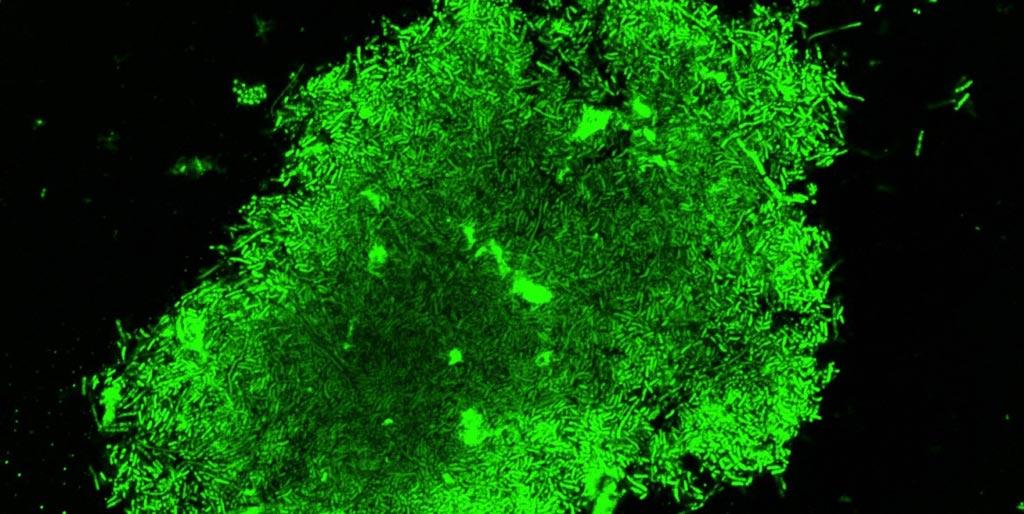Novel Fluorogenic Probe Rapidly Identifies Tuberculosis
By MedImaging International staff writers
Posted on 28 Aug 2018
A microfluidic chip and fluorescent imaging probe can automate live Mycobacterium Tuberculosis bacterial counts from sputum samples, claims a new study.Posted on 28 Aug 2018
Developed at Stanford University School of Medicine (Stanford; CA, USA), Zhejiang Sci-Tech University (Hangzhou, China), and other institutions, the dual-targeting fluorogenic probe (CDG-DNB) contains three functional units: a β-lactamase hydrolase sensing unit, a decaprenylphosphoryl-β-d-ribose 2′-epimerase (DprE1) binding unit, and a caged fluorescent reporter. Within one hour of activation of β-lactamase, the bacilli are fluorescently labeled, with the fluorescent product retained through covalent modification of the DprE1 binder, an essential M. Tuberculosis enzyme.

Image: Live Tuberculosis bacilli glowing under the fluorescent probe (Photo courtesy of Jianghong Rao / Stanford University).
The dual-targeting probe not only discriminates live from dead Bacillus Calmette-Guérin (BCG), but also shows specificity for M. Tuberculosis over other bacterial species. In addition, CDG-DNB3 can image BCG phagocytosis in real time, as well as M. Tuberculosis in the patients’ sputum. Together with a low-cost, self-driven microfluidic chip, rapid labeling and automated quantification of live BCG can be achieved in an hour. According to the researchers, the labeling approach should find many potential applications for research toward tuberculosis pathogenesis, treatment efficacy assessment, and diagnosis. The study was published on August 15, 2018, in Science Translational Medicine.
“Current methods can take up to two months to complete, a stretch during which an infected individual could spread TB broadly, even if they don't know it. A quicker diagnosis could curtail the infection rate,” said senior author Professor Jianghong Rao, PhD, of Stanford University. “This imaging technique uses run-of-the-mill fluorescence microscopes that nearly all hospitals have and no special training required. All that's needed is a sample of the patient's ‘sputum’, or a spit sample, that can be prepared and put under the microscope for analysis.”
“The fluorescent probe can help determine the appropriate drug by literally showing which bacteria are still alive in the patient sample. Those that are alive glow green; those that aren't, or are a different species of bacteria, appear dark,” concluded Professor Rao. “For cases of drug-susceptible tuberculosis, the treatment success rates are at least 85%, but the rate of success is only 54% for multidrug-resistant tuberculosis, which requires longer treatments and more expensive, more toxic drugs.”
M. Tuberculosis in most cases succumbs to a regimen consisting of isoniazid, rifampin, ethambutol, and pyrazinamide for eight weeks, followed by isoniazid and rifampin for another 18 weeks. But inadequate or interrupted treatment can lead to resistance; Multidrug-resistant tuberculosis (MDR-TB), is resistant to isoniazid and rifampin; extensively drug-resistant tuberculosis (XDR-TB), is resistant to isoniazid and rifampin, as well as any fluoroquinolone and at least one of three injectable second-line drugs, such as amikacin, kanamycin, or capreomycin.
Related Links:
Stanford University School of Medicine
Zhejiang Sci-Tech University













